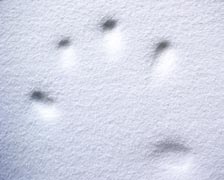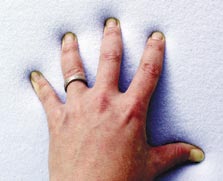Everyday Tech From Space: 'Memory Foam' for the Masses
Chances are you've encountered something called temper foam, even if you didn't realize it. This foam padding, which absorbs shock while providing comfort and protection, is now widely used almost 50 years after it was developed for NASA.
Temper foam has padded the helmets of race car drivers and Dallas Cowboys, been used to manufacture comfortable prosthetic limbs, and found its way into shoe insoles so that men and women around the world need not sacrifice style for comfort. Yet it was invented in 1966 for use in NASA's airplane seats.
Charles Yost was an aeronautical engineer with Systems Dynamics Group at North American Aviation Inc. who in 1962 helped build a recovery system for the Apollo command module, during the agency's lunar landing program.
This experience served Yost well four years later when he was contracted by NASA through Stencel Aero Engineering Corp., located in Asheville, N.C. The National Aeronautics and Space Agency wanted to improve the probability that someone in its airline seats would survive a crash.
Yost responded by creating an open-cell, polymeric "memory" foam material that possessed unusually high energy absorption while maintaining softness and pliability.


Protecting airline passengers
NASA's Ames Research Center in Moffett Field, Calif., incorporated this cushion-like material into new airplane seat designs. The foam's ability to evenly distribute body weight and pressure also meant that passengers would experience increased comfort on long flights.
Get the Space.com Newsletter
Breaking space news, the latest updates on rocket launches, skywatching events and more!
The invention was originally referred to as "slow spring back foam," because the material flowed to match the contour of whatever was pressing against it – like a mold – and returned to its original shape once the pressure was removed.
In 1969, Yost formed Dynamic Systems Inc. to sell the technology, which came to be known as "temper foam." The Lancaster, N.C., company eventually sold the rights to temper foam in 1974, but later returned to manufacture and sell environmentally friendly and less-temperature-sensitive derivatives of the original material.
Since the inception of temper foam, Dynamic Systems has found applications for the technology in the medical, automotive and military industries.
A large portion of the company's product sales comes from the medical industry; the cushioning material is used for orthopedic seating pads, mattress pads and custom-molded seats for the disabled.
Contoured foam inserts for wheelchairs gently hold a person in position and evenly distribute the seating pressure to improve blood circulation and alleviate pressure points.
Similar products are used to manufacture comfortable prosthetic limbs that can be molded into a variety of muscle tones. The temper foam prevents friction between the prosthesis and the skin. The characteristic open-celled structure of the foam also allows the prosthetic to breathe, preventing heat buildup.
Temper foam's wide reach
Yost's foam technology is also used in NASCAR, Formula 1, Champion Auto Racing Team and Indy Racing League race cars. Vehicles are outfitted with shock-absorbing foam inserts that have helped some drivers walk away relatively unscathed from serious crashes. Modified versions of these inserts with fire-retardant additives have greatly improved race car safety systems.
Motorcycle enthusiasts also have Yost and his memory foam technology to thank for their more comfortable tushes on long rides. Beginning in 1998, many motorcycle saddles were retrofitted with temper foam to reduce the backaches, stiffness and numbness that often result from prolonged riding.
The firmest rendering of the foam material has found applications in the military. Temper foam padding is used inside bulletproof vests to significantly reduce bullet impact pressure. The material is similarly used as a shock absorber in military vehicles and ejection seats in military aircraft.
Back at NASA, temper foam is still widely in use. A special 4-inch-thick cushion floor of temper foam serves as the base of a challenging obstacle course that helps returning astronauts re-adapt to Earth's gravity. The foam floor provides an unstable surface that enables NASA doctors to evaluate how well astronauts regain their equilibrium.
"We used the foam as part of our obstacle course to test astronaut’s postflight functional mobility," NASA spokesman Bill Jeffs told SPACE.com. "The foam provided an unstable walking surface to increase the challenge of the test."
One such cushion floor was also sent to Russia for use by astronauts returning home from the International Space Station.
So the next time you sit comfortably in an airplane or car or on a motorcycle, you're a little closer to space technology than you think.
You can follow SPACE.com Staff Writer Denise Chow on Twitter @denisechow.
Join our Space Forums to keep talking space on the latest missions, night sky and more! And if you have a news tip, correction or comment, let us know at: community@space.com.

Denise Chow is a former Space.com staff writer who then worked as assistant managing editor at Live Science before moving to NBC News as a science reporter, where she focuses on general science and climate change. She spent two years with Space.com, writing about rocket launches and covering NASA's final three space shuttle missions, before joining the Live Science team in 2013. A Canadian transplant, Denise has a bachelor's degree from the University of Toronto, and a master's degree in journalism from New York University. At NBC News, Denise covers general science and climate change.









